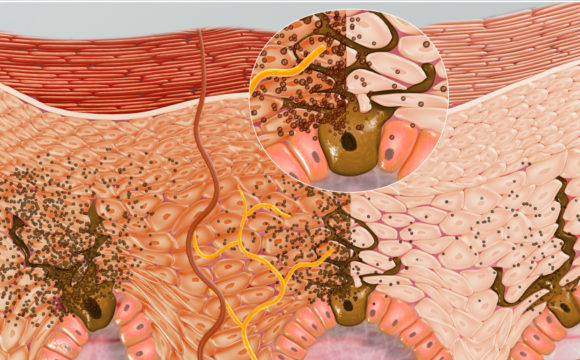Today, Diabetes is one of the most threatening, chronic, non-communicable diseases spread out across the world. Diabetes is a disease condition where the body’s ability to use blood sugar for energy is affected. There are three types of diabetes, Type 1, Type 2, and gestational diabetes.
In Type 1 diabetes or juvenile diabetes, the pancreas produces little or no insulin. There are some genetic factors which are responsible for the development of Type 1 diabetes. Gestational Diabetes develops during pregnancy and usually disappears after childbirth. Type 2 Diabetes also known as Diabetes Mellitus has become epidemic throughout the world. This is the condition where the body’s ability to use insulin properly is affected. In Type 2 diabetes body becomes less sensitive to insulin resulting in an increase in insulin resistance, and inflammation.
The prevalence of diabetes mellitus is rising every year rapidly. According to WHO, there are currently about 422 million people across the globe diagnosed with diabetes, and the number is estimated to grow up to 600 million by 2040. The rapid rise in the diabetic population is the result of changing lifestyles, increasing industrialization and urbanization, social and economic developments, rising geriatric population, changing eating habits, and reduced physical activities.
Understanding the aetiology and pathogenesis of Diabetes Mellitus is quite complex. There are genetic, social and environmental factors that play an important role in triggering risk of Diabetes Mellitus in individuals.
Here are a few social factors and environmental conditions that research says can trigger Type 2 Diabetes Mellitus
-
Air Pollution
Air pollution can be defined as a mixture of gases and solid particles in the air. Gases emitted by cars and other vehicles, chemicals from industries, pollen grains, dust, spores are the few factors that are responsible for polluting air. Dijkema et al with their research work found that when NO2 level in the air is increased, the chances of development of Type 2 Diabetes is also increased.
Traffic-related air pollutants such as gases emitted by cars and other vehicles, chemicals from industries can also be responsible for the development of Type 2 Diabetes. Some studies by Andersen et al. have shown that those people who are spending much time in traffic, get exposed to traffic-related air pollutants for a longer period, have lack of exercise and living an unhealthy lifestyle are at a high risk of Type 2 Diabetes. However, those who are living a healthy lifestyle with regular exercise have a lower risk of Type 2 diabetes due to air pollution. The occurrence of the air pollutants in the lungs triggers the production of inflammatory factors by macrophages and alveolar epithelial cells. The increased levels of inflammation factors lead to the development of Type 2 Diabetes.
-
Radiation Exposure
Today, mobile phones, electronic watches, computers, laptops, and other electronic communication devices are an imperative part of life. Need for alternative energy sources are supporting the establishment of nuclear power plants. All the above activities emit some kind of radiation which everyone gets exposed to on a daily basis. Long-term exposure to radiation is highly dangerous to health. One of the possible health risk factor due to radiation is the development of diabetes. Existing research shows that cancer patients treated with radiation therapy have a high risk of development of Type 2 Diabetes Mellitus.
One survey in China has shown that people working in a nuclear power plant have a higher risk of Type 2 diabetes mellitus. Radiation is an inducer of inflammation. Inflammatory response of the body is related to the insulin resistance. Hence, people using smartphones and other electronic devices need to be careful and limit their usage as long-term exposure to radiation can cause them to suffer lifelong from Type 2 Diabetes.
-
Psychological Factors
With the growing prevalence of depression and anxiety, investigations on the effect of psychological factors on the development of Type 2 Diabetes Mellitus are also increasing. According to the World Health Organization Diabetes Expert Committee reports, rise in the psychological burden or pressure may develop glucose tolerance-related abnormalities. Psychological pressure induced by work stress or any other means may cause hormonal changes leading to abnormal insulin secretion and glucose metabolism. Studies show that depression can induce a chronic inflammatory response and lead to the development of Type 2 Diabetes in men and women.
-
Alcohol Intake
The changing lifestyles and social influences are the main factors that are responsible for the increased alcohol intake by the people across the globe. High intake levels can damage liver resulting in serious health problems. The liver is the organ where glucose homeostasis is regulated through glycogen synthesis and catabolism. Liver damage may affect glucose metabolism, glucose tolerance and further, it may cause Type 2 Diabetes Mellitus.
-
Lack of Exercise
People generally commute to their workplaces using cars, buses or trains. There is a drastic decline in daily physical activity. People don’t have time for regular exercise or any physical activity or a simple 20 min walk every day, due to busy schedules. Studies have shown that lack of exercise is one of the major risk factors for the development of Type 2 Diabetes Mellitus. Exercise triggers glucose metabolism and encourages the intake of glucose in the blood. Exercise also reduces stress and other psychological pressures, enhances immune function and metabolism, improves health and reduces chances of Type 2 Diabetes Mellitus.
-
Sleep-Related Factors
In recent years, the sleeping pattern of people has badly changed. This is because of changing working patterns and duty hours. To be healthy, one should have a minimum of seven hours of sleep every day. However, today the average daily sleep time is showing a downward trend. The lack of sleep or insufficient sleep causes a gradual increase in the body’s insulin resistance. Studies have shown that people sleeping for less than seven hours show an increase in blood sugar levels. People with sleeping disorders show an increase in levels of inflammatory factors which further may develop Type 2 Diabetes Mellitus.
It can be said that social factors and natural environment is related to Type 2 Diabetes Mellitus in dual ways. If the natural environment is good and offers healthy conditions such as pollutants free air, it can reduce the chances of development of type 2 diabetes by offering healthy living conditions. But if a person is living an unhealthy lifestyle such as lack of exercise, prolonged use of the smartphone, it may trigger type 2 diabetes. Future studies that aim to investigate the cellular and molecular effects of social factors and natural environment on the induction of Type 2 Diabetes Mellitus can provide an in-depth understanding.
References:
- https://www.ncbi.nlm.nih.gov/pmc/articles/PMC6614969/
- https://www.ncbi.nlm.nih.gov/pmc/articles/PMC3662286/
- https://www.healthline.com/health/diabetes-risk-factors
- https://www.health.harvard.edu/a_to_z/type-2-diabetes-mellitus-a-to-z
- https://care.diabetesjournals.org/content/36/8/2430
- https://www.intechopen.com/books/environmental-health-risk-hazardous-factors-to-living-species/environmental-factors-in-causation-of-diabetes-mellitus










